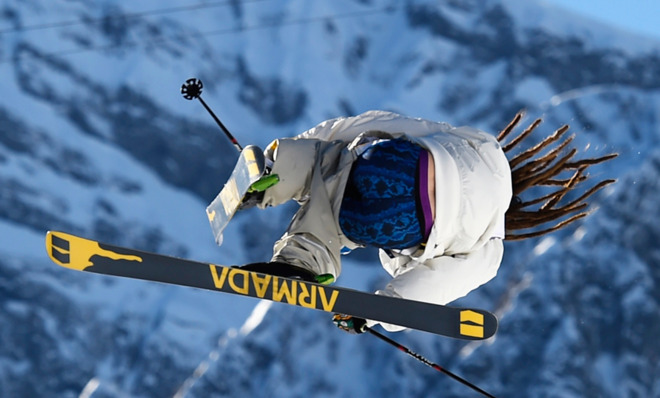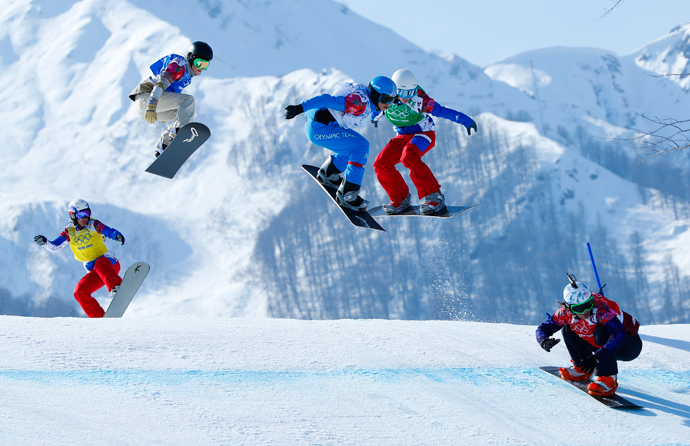Good riddance to the skate-punk Sochi Olympics
Whatever happened to athletic artistry and elegance?


With the 2014 Winter Olympics coming to an end on Sunday evening, I can’t help but wonder if I’m the only one who found something deeply dissatisfying about them.
I don’t mean to denigrate the efforts and achievements of any of the athletes. Everyone works incredibly hard to make it into the Games, and those who come out on top possess physical prowess so far in excess of my abilities that they might as well be considered members of a different species.
That said, it seems to me that the Games have been morphing over the past two decades into something very different than they used to be. Alpine skiing (downhill and slalom), ski jumping, figure skating, bobsled, speed skating, ice hockey, curling — prior to the mid-1990s, these and a few other events were it for the Winter Olympics.
The Week
Escape your echo chamber. Get the facts behind the news, plus analysis from multiple perspectives.

Sign up for The Week's Free Newsletters
From our morning news briefing to a weekly Good News Newsletter, get the best of The Week delivered directly to your inbox.
From our morning news briefing to a weekly Good News Newsletter, get the best of The Week delivered directly to your inbox.
But then the International Olympic Committee added half-pipe snowboarding in 1998. And then snowboard cross (or SBX) in 2006. And slopestyle and half-pipe skiing for the ongoing 2014 Games. Now it seems every day I turn on NBC in prime time I see the same puerile acrobatics that skate punks perfect on concrete steps and park benches in public spaces across middle America.
First there are snowboarders flipping and flopping down the half pipe. Then there’s some lunatic doing the same thing on skis — and backward no less. And Jesus Christ, is that half a dozen snowboarders in a combined race careening down the mountain, jumping, flipping, hurling through the air, and colliding into one another with reckless abandon?

I know, I sound like an old fogy.
But there’s more to it than that.
A free daily email with the biggest news stories of the day – and the best features from TheWeek.com
As The New York Times noted earlier this week, figure skating has been amped up over the past few Olympics to the point where artistry now takes a backseat to an increasingly impossible jump contest. Hardly anyone can land a quadruple jump consistently, not even gold medalists. But I doubt that will keep someone over the next four years from trying for a quintuple.
We see the same thing — or rather, we hear it — on American Idol and the pop music charts: divas pushing vocal acrobatics to the breaking point, blending vibrato with a flood of so many show-offy, fluttering grace notes and filigrees that the melody of the song ends up irretrievably smudged, dissolving into a musical miasma.
And it’s there, too, in ever more outrageously over-the-top comic-book action flicks in which adolescent thrill-seeking conspires with CGI to produce seemingly endless strings of technologically generated crashing starships and collapsing skyscrapers, leaving acres of virtual rubble and countless thousands of fictional corpses in their wake.
Of course athletes — and singers and filmmakers — should push themselves, striving for technical excellence. But artistry matters, too, even though it can’t be quantified with the same rigor or precision as the spins, flips, hand plants, slides, stalls, and other flashy maneuvers that snowboarders, surfers, and skateboarders try to rack up on their trickster tally sheets.
The problem with the recent additions to the roster of Winter Olympic events is not that they include these and other tricks. It’s that they’re entirely about tricks, one after another, each serving as the set-up for the next, even more flamboyant display of raw technical proficiency.
It can be breathtaking. But it’s also tasteless, like a superficially beautiful but utterly bland piece of genetically modified fruit.
Ultimately, the tricks are an expression of a manic global meritocracy — with constant cross-cultural competition spurring continual upward striving toward an ever-rising standard of perfection in athletic skill.
Isn’t that what the Olympics have always been about? To some extent, yes. (From the beginning, the modern Olympic movement has been as motivated by social Darwinism and the eugenic sensibility as it has been by internationalism and humanitarianism.)
But with the new events, the focus on technical self-display has reached unprecedented heights — heights that will of course be surpassed four years from now in Pyeongchang, South Korea.
So by all means, let’s salute the athletes and their accomplishments these past two weeks. But let’s also be sure to take note of the direction the games — and our culture — appear to be going.
Damon Linker is a senior correspondent at TheWeek.com. He is also a former contributing editor at The New Republic and the author of The Theocons and The Religious Test.



